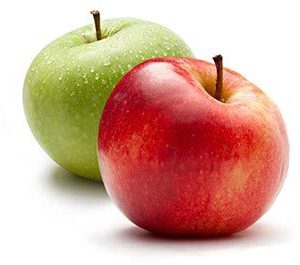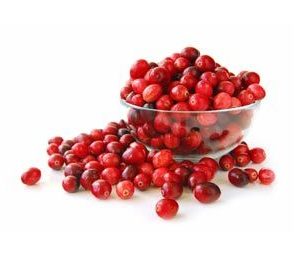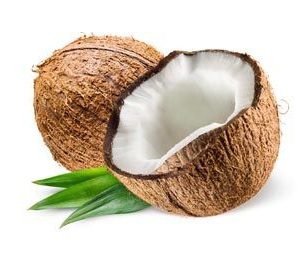The pluot (Prunus domestica x prunus armeniaca) is essentially a newcomer in the world of fruits, only having been introduced in the 1980s. This fruit was initially discovered and produced by Floyd Zaiger, who cross-pollinated the plum and the apricot plant. This led to the invention of the pluot, which should not be interchanged with other plum-apricot hybrids.
There are numerous varieties of plum-apricot varieties, but pluots should not be mistaken for plumcots and apriums. These hybrids differ through their varying plum-apricot ratios. Some hybrids have a 50:50 ratio of plum and apricot genes, while some have higher percentages of either of the two fruits.
While it is easy for people to assume that pluots are a product of genetic manipulation and gene modification, pluots were actually produced quite organically. Zaiger used hand-pollination, and no chemical or genetic intervention.
What Is a Pluot?
Pluots are hybrids of the plum and the apricots, summer fruits that have been part of the human diet since the early times. While there are numerous hybrids of both of these fruits, pluots are more plum than apricot. There have been different accounts of varying percentages, with some saying that pluots contain up to 75% of plum genes. The varieties of the pluot fruit depend on this percentage, but pluots will always have a higher percentage of plum genes than apricot genes.
Pluot trees normally look more like plum trees than apricot trees. Because of this, the growing environment of these trees generally leans towards the same growing conditions as plum trees, growing best in climates where frost is rare in spring and winters are cold enough for dormancy.
Pluot trees usually start producing white flowers in the spring and fruits appear in the summer. Pluot season usually starts around Memorial Day (May) and lasts until mid-September.
There are various pluot varieties due to the differing percentages of plum and apricot genes. There are about 20 new varieties of pluot fruits, but the list is still growing. Most of the varieties of the pluot fruit are owned by Zaiger’s company, Zaiger Genetics. These varieties can be differentiated based on their skin and flesh color, varying from golden yellow to blood red.
Some of the most common varieties of pluots include the Flavor King, Dinosaur Egg, Mango Tango and the Flavor Heart varieties. Flavor King pluots can be set apart from other fruit varieties through their lustrous and blood red skin. The Dinosaur Egg pluots are named as such because of their golden and red speckles, the same way that dinosaur eggs are usually depicted.
The Mango Tango variety, on the other hand, is not related to mangoes, but rather has a similar appearance, with its reddish yellow skin. Some people also note that they can taste mango undertones in this variety because of its sweet tropical taste.
Lastly, the Flavor Heart variety is named as such because of its distinct heart shape. It also has the darkest skin out of all the varieties of pluots, which is a dark purple-red, plus a yellow flesh.
Get These Health Benefits When You Eat Pluots
Aside from its enticing color, there are other important reasons as to why you should add pluot to your diet. Because of the merging of the plum and the apricot, pluots are a manifestation of the health benefits of both fruits.
Pluots contain a variety of vitamins and minerals that could provide your body with a boost in immunity and other factors. Here are some of the health benefits you can get from eating pluots:
- Helps reduce the risk for constipation —Pluots may help inhibit constipation because of their high amounts of dietary fiber, which promotes metabolism and smooth digestion. By inhibiting constipation and other digestive problems, you can also help minimize your risk for colon cancer and other severe GI tract diseases.
- Boosts the immune system —Pluots help the immune system function more efficiently through their vitamin C content. Vitamin C is one of the micronutrients that help in protecting the body against free radicals that can lead to the development of cancer and other diseases.
- Helps in maintaining eye health —The high amount of vitamin A in pluots positively affect eye health because of this vitamin’s ability to be converted to beta carotene. Consuming foods rich in vitamin A may help lower the risk for macular degeneration, one of the leading causes of blindness in later years.
- Improves heart health —Pluots contain potassium, a mineral that is responsible for controlling the electrical balance of your heart. It is also responsible for muscle building. Just make sure that your potassium intake does not exceed the recommended levels, because it’s just as harmful as low levels of potassium in the blood.
Culinary Uses of Pluots
While pluots are usually eaten fresh and raw, people have found ways to incorporate this fruit into their culinary masterpieces. For example, because of the short shelf life of organic pluots, people have started to make pluot preserve or jam. These fruits can also be grilled with salt and pepper, and usually served as a side dish for fish or other meats. It can also be added to salads and salsa.
It’s also used in pies as an alternative to other fruits or berries. When apricots aren’t on hand, pluots are a good alternative when making apricot or plum pie. The sweet and soft consistency of pluots is a good match for its crumbly crust.
How Do You Cook Pluots?
If pluots are abundant in your community and you’re starting to get tired of eating them in the same manner, there are a variety of ways you can enjoy pluots. Here are a few suggestions:
- Grilled —Cut pluots in half and brush with raw honey and Dijon mustard. Grill both sides until brown. You can also grill them with salt and cayenne pepper if you’re planning on serving as a side dish.
- Glazed —Slice pluots in half and place them in a pie pan. Spoon apricot jam or marmalade on top of the pluots. Broil until bubbly and browned, and eat with plain yogurt.
- In salads —Dice pluots and add to your usual salad to add flavor. Use balsamic vinaigrette.
- In salsa —Substitute tomatoes with chopped up pluots. Mix with lime juice, chilies, onion and cilantro.
Nutritional Facts of Pluot
The pluot fruit is a good example of a fruit that offers you high levels of vitamins and minerals without compromising its taste. With its sweet and aromatic characteristics, it’s a good choice for kids and adults alike. Here is a breakdown of the pluot fruit’s nutritional facts to help you keep track of the nutrients you’re getting from this fruit:
Pluot Nutrition FactsServing Size: 100 grams |
||
| Amt. Per Serving |
% Daily Value* |
|
| Calories | 45 | |
| Calories from Fat | 0 | |
| Total Fat | 0 | |
| Saturated Fat | 0 g | |
| Trans Fat | ||
| Cholesterol | 0 mg | |
| Sodium | 0 mg | |
| Total Carbohydrates | 11.4 g | |
| Dietary Fiber | 1.3 g | |
| Sugar | 9.74 g | |
| Protein | 0.65 g | |
| Vitamin A325 IU | Vitamin C | 9.4 mg |
| Calcium6 mg | Iron | 0.12 mg |
While pluots may offer a wide variety of health benefits, it’s not a good idea to binge on these. Pluots contain high amounts of fructose and may lead to a spike in blood sugar, which may then lead to numerous health repercussions. This means that instead of improving your health, you’re actually making it worse. Monitor your intake of this fruit to ensure it does not exceed a moderate level, and you will maximize the benefits it has to offer.







Reviews
There are no reviews yet.